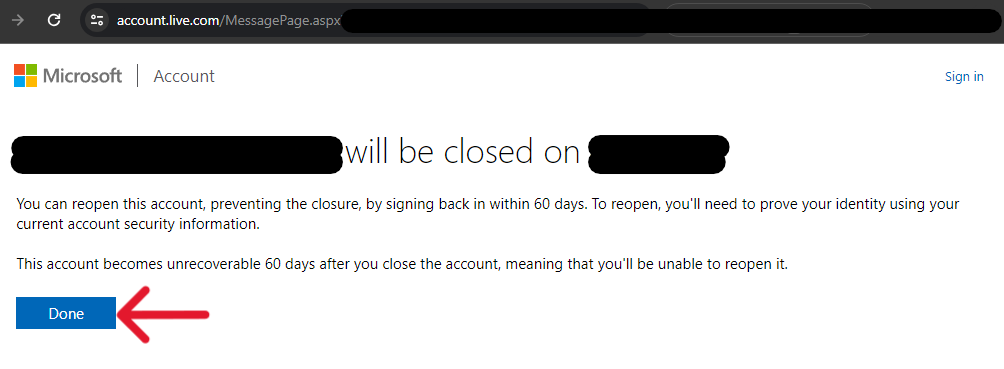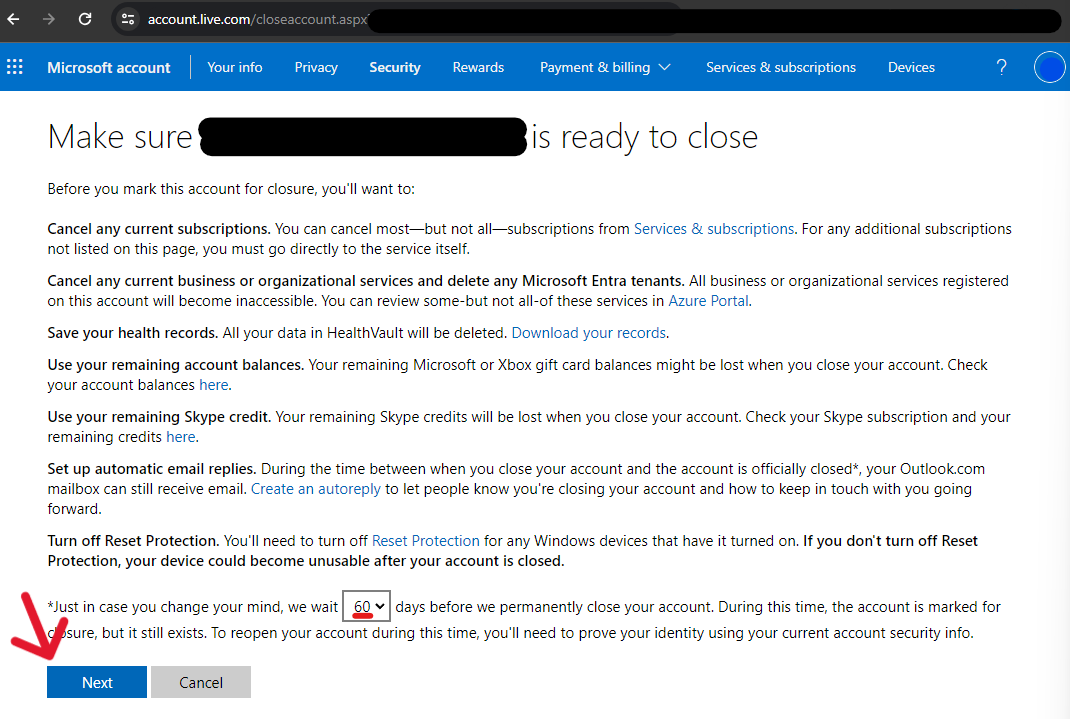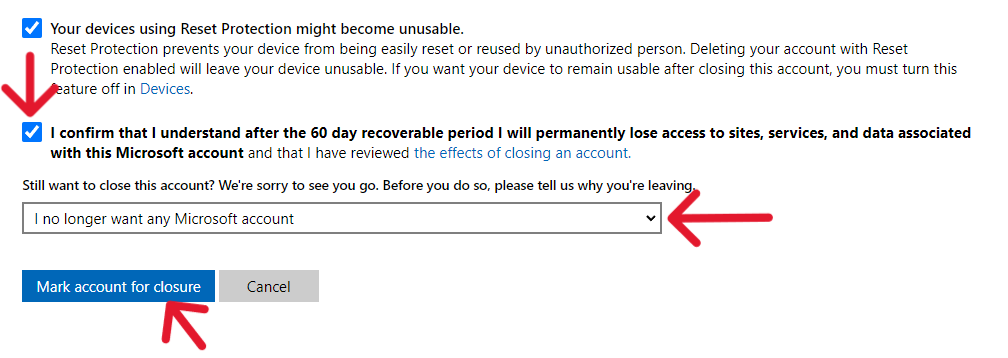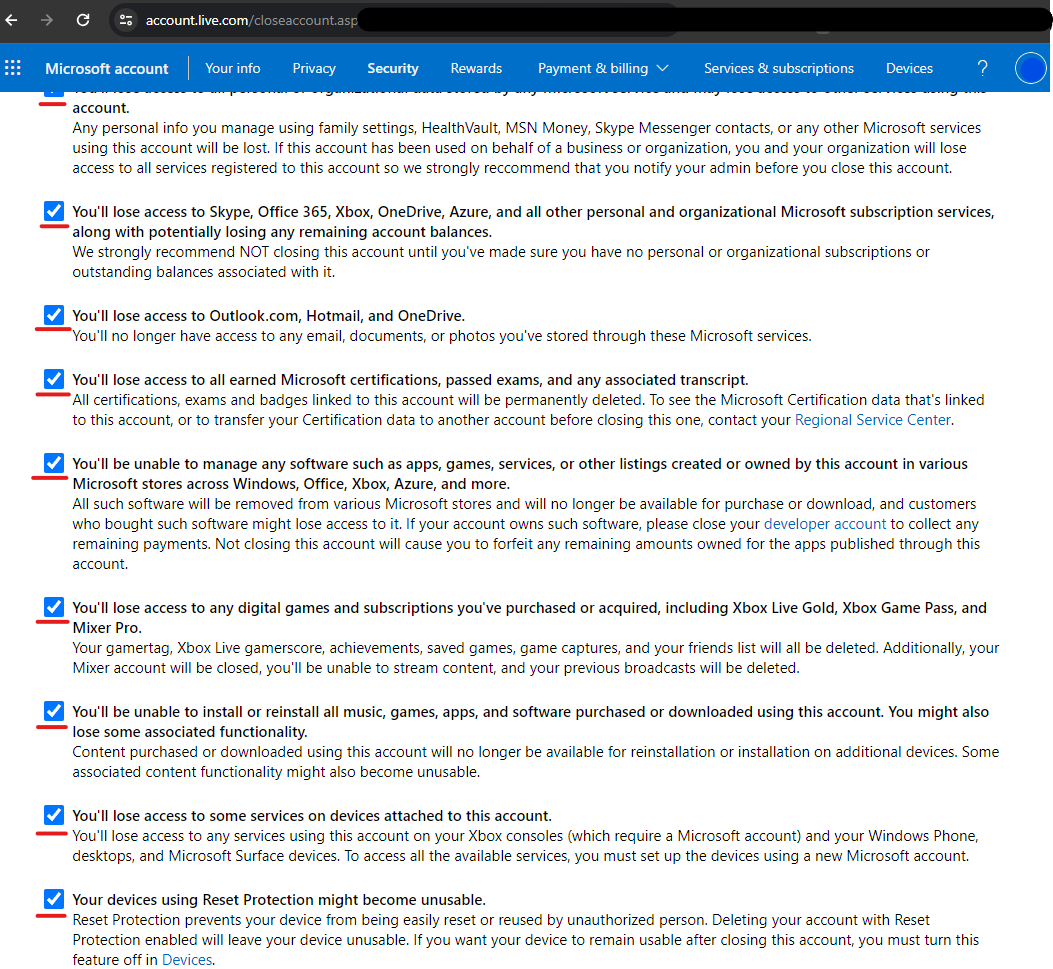How to Delete an Outlook Account
Table of Contents
What is Outlook?
Outlook.com is Microsoft's answer to email communications. Overseen by the world's most significant tech corporation, Outlook provides users with a free email service with system-integrating features. Outlook is the chosen servicer for over 400 million people globally, and that doesn't include Microsoft accounts connected to Outlook's servers. Outlook's ties to Microsoft make it seamless with other Microsoft services like Xbox, Skype, OneDrive, and Microsoft 365. As a result, Outlook offers constant updating ability, from contacts to document changes.
Users cannot delete their Outlook account without also deleting their Microsoft account. The profiles are interconnected. Consequently, there's no way to delete one without impacting both. The seamless accessibility that Microsoft offers between their products is vital for some professionals and industries, but it can be a nightmare for those with less use for it. Any time, a cybercriminal could breach the security of a user's account, and that access could jeopardize the data of all connected networks and profiles. No matter why users leave Microsoft, they must consider multiple aspects before committing; this article will help with those considerations. Here's how to delete an Outlook account.
How to Delete an Outlook Account Permanently
Outlook is a reliable resource for organizations worldwide; its integration abilities are vital for professionals and individuals, and consequently, this means Microsoft takes the security of Outlook very seriously. To that end, users can only request an account deletion if they have an applicable account password; without it, no user can verify their identity as the profile owner. Subsequently, Microsoft will not accept a deletion request without it. Users without an applicable password can request a reset for the credentials; however, these users must wait 60 days before Microsoft will allow them to delete the profile.
What to Know Before Making a Request
The most significant consideration regarding an Outlook deletion is how that request will impact connected or associated profiles. A deletion request strips an account of all its entitlements and history, and because users must delete their Microsoft account to dissolve their Outlook profile, the request will impact all associations through the account.
In the case of Outlook, users should be particularly weary of deleting their account; once the user makes the request, there's no way for them to recover the profile. Email addresses like @outlook.com, @hotmail.com, @live.com, and @msn.com all dissolve with the account; any leftover emails dissolve on deletion, but so do all connections to the email. There's no way to go back and access the profiles because they are considered "unavailable" despite the user having an applicable password. Users should consider setting up a secondary email and transporting everything to that new address to get around this.
How to Delete an Outlook Account: Visual Assistant
How to Delete Outlook Accounts Without a Password
As part of Microsoft's security policies, users who reset their passwords must wait at least 60 days before making profile alterations (like requesting a deletion). However, not all users can wait for this duration; circumstances like death may raise further difficulties. Situations of death are additionally challenging because the requesting party may not have access to the other person's recovery accounts. In these circumstances, users may have a better solution in waiting. After two years of inactivity, Microsoft will automatically dissolve the account and its iterations.
How to Delete an Outlook Account by Computer
Step One:
The most straightforward way to request an account deletion from Microsoft is by using their online form. Users with an applicable password should open the form in a new tab and sign in; if not verified, Microsoft's system may request that the user authorize their identity by completing a one-time token process. When the user has finished verifying their identity, they'll see the refreshed page in step two.

Step Two:
Click the blue "Continue" button when ready. If the browser has timed out, it may ask the user to verify their identity again. Sign in again if prompted; otherwise, the following page prompts the user to "Break free from [their] passwords". Click the blue hyperlink "No thanks".

Step Three:
Read through the following page; upon finishing, select the recovery time, either 30 or 60 days. Ensure all items on the list are correct, then click the blue "Next" button.

Step Four:
The next page is monstrous; read each statement and tick each box beside it. In doing this, you're allowing each circumstance. Users must check every box.

Step Five:
At the bottom of the disclosure form, ensure the last box is blue, and use the drop-down menu to select a reason for departure. Click the blue "Mark account for closure" button to finish.

When the system completes the request, it presents the confirmation page below. The user cannot access the account now, but they can recover it within their specified time frame. Tap the "Done" button or exit the browser when ready.

Confirm the Deletion Request to Finish
After making the deletion request, users must attempt to sign in to the account. When the submission is successful, it will not allow the user to access the profile. However, this isn't the last time users must return to Microsoft. Anything can go wrong between when the user submits their request and when it completes; system and human errors, ignored requests, rejections, and other problems can stop an account deletion before it finishes. Even worse, if the user isn't made aware of these issues, they may not know their account is still active. Consequently, the only way to know the final status of an account is by returning to check.
Frequently Asked Questions
How Does Outlook Treat Deleted Data?
When users request to delete their Outlook account, they ask the system (Microsoft) to completely dissolve the profile and all associated aspects. They lose all media and application histories, files, credentials, entitlements, and purchases linked to the profile. In Outlook, users are also losing a significant option for credential recovery because the request also deletes history from affiliated profiles (i.e., third parties) within the Microsoft account.
Can I Recover a Deleted Outlook Account?
Users cannot recover a deleted Outlook account unless they set their recovery email for an outside address (i.e., Gmail, Yahoo, or other platform); this unrecoverable status is due to the nature of deletions. In other words, because the email/account is frozen, there is no way to access it to stop the request from completing. That said, if a user pushes their Outlook content to another address and then makes a deletion request, they'll have between 30 and 60 days to change their mind, and using that secondary email, they can stop the process before it completes.
What Does Outlook Do For Deactivated Accounts?
Traditionally, on membership websites, users can request to deactivate their account; these deactivations limit the intractability of a profile and allow the user to leave and return later without missing anything. Microsoft does not offer a deactivated status for their accounts; however, users can achieve the same impact by requesting to delete them. The process involves selecting a 30 or 60-day time frame, wherein users can stop their request from completing. These recovery periods also double as an alternative to deactivating the account.
How to Delete Multiple Emails in Outlook
Users who want to delete messages en masse from Outlook have a few options. To delete all emails from an email folder, the user can select an email, press and hold the Shift key, and select another. Users should ensure the system selects every message between the first and last emails. The user can then tap the Delete key to confirm the action. Otherwise, users can select the first email they want to dissolve, then press and hold the Ctrl key; each email they select after that will be deleted (after they tap the Delete key).
How to Delete Folders in Outlook
Users can delete from storage everything associated with a folder in Outlook. The process immediately moves all emails within a folder to the deletion or trash bin. Consequently, the user must empty the trash bin (or "Deleted Items" folder) to delete the emails entirely. To delete a folder, start by opening the Folder Plane on the left side of the screen. From there, the user can right-click the folder they want to delete, then click the "Delete Folder" command from the menu.
How to Delete a Group in Outlook
In Outlook, groups can be a diverse tool, allowing users to share files, documents, notebooks, Planner tasks, and conversations regarding a particular project. However, when that project finishes, there's no need to keep the group active. Users can delete their groups from Windows, web, or iOS, but the most straightforward method is via Windows. Group owners should open Outlook and, under "Groups" on the left side, select the group they want to dissolve. Once the group description appears, they can refer to the bottom of the window to click the "Delete group" button. They must confirm the request once more before the group dissolves.




